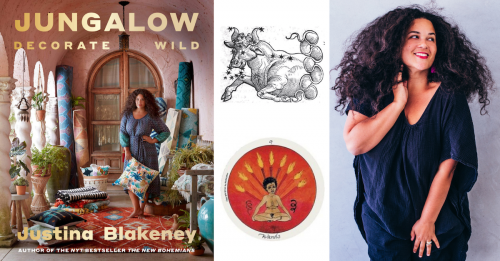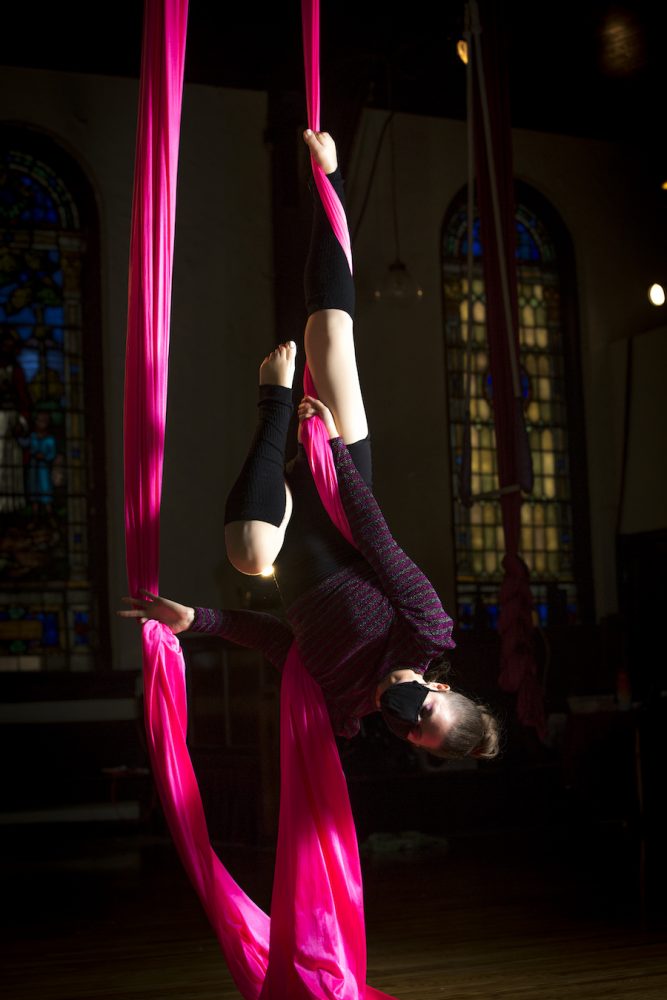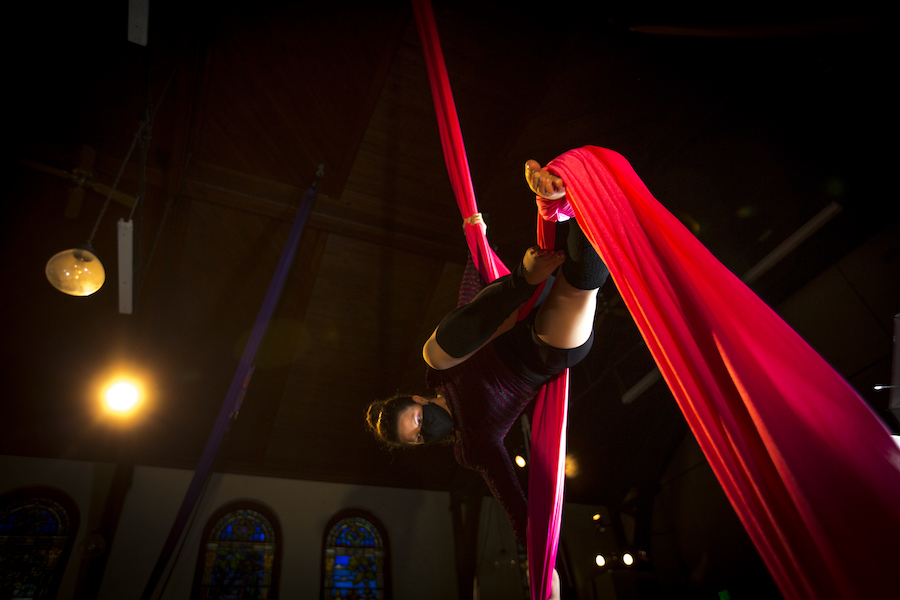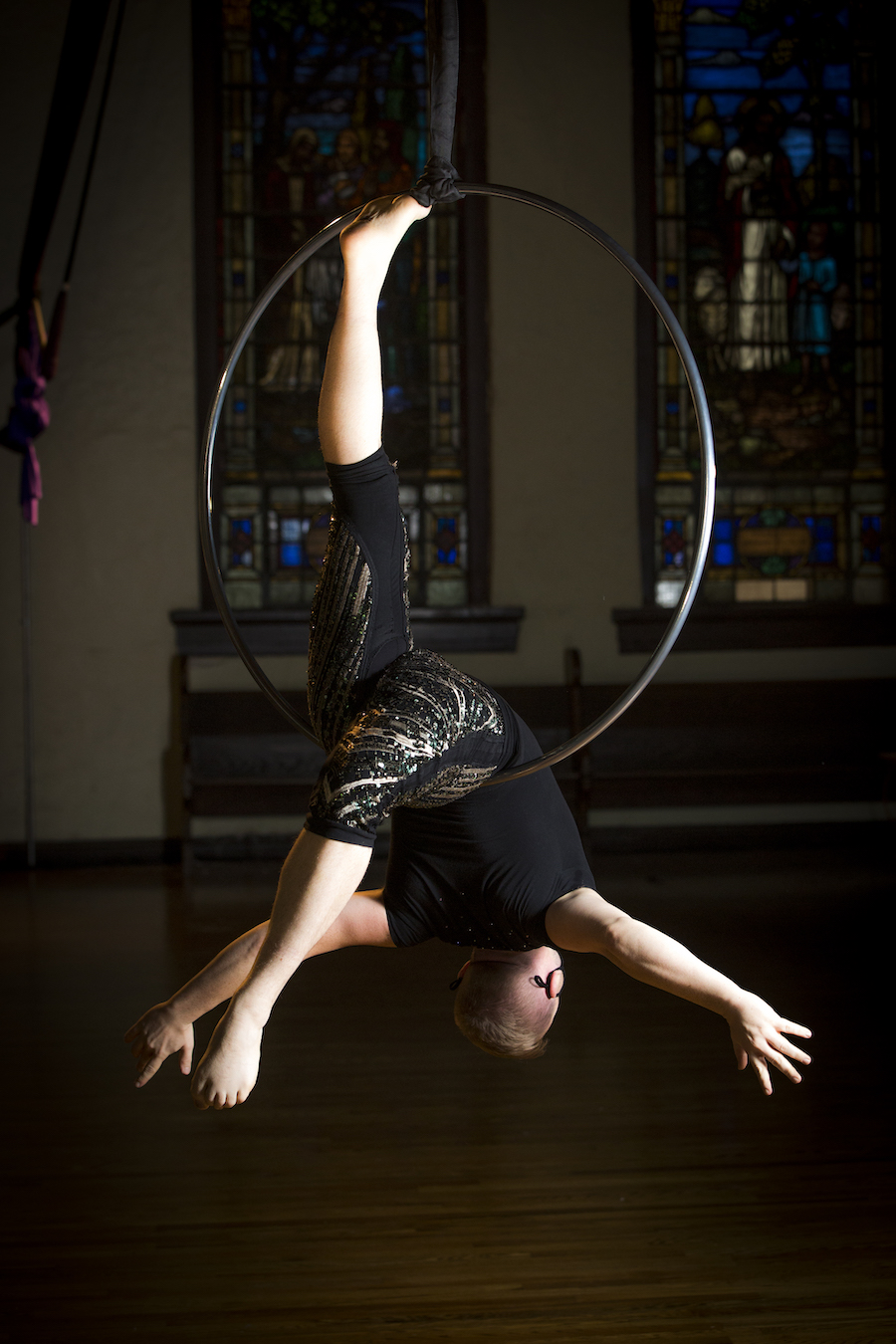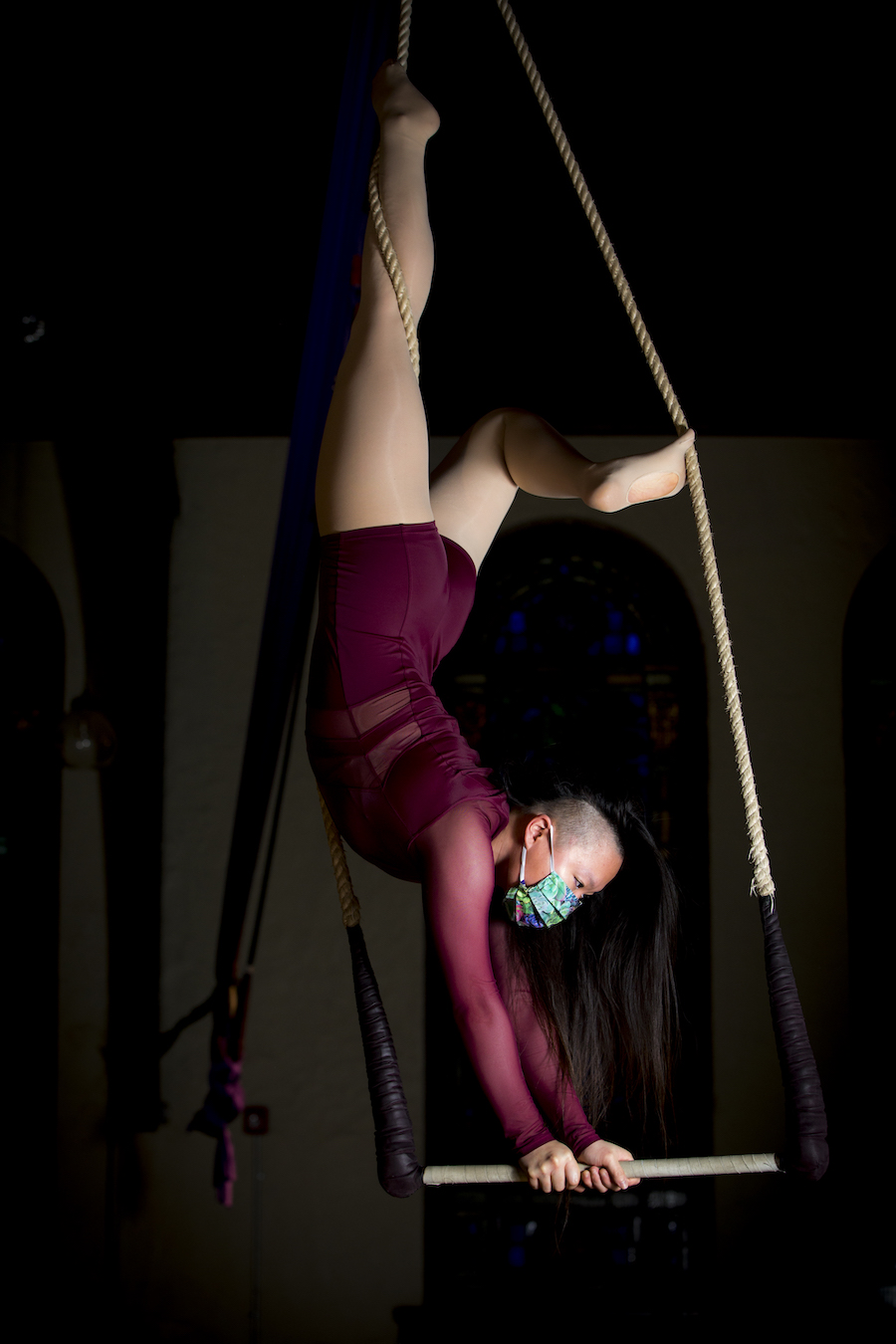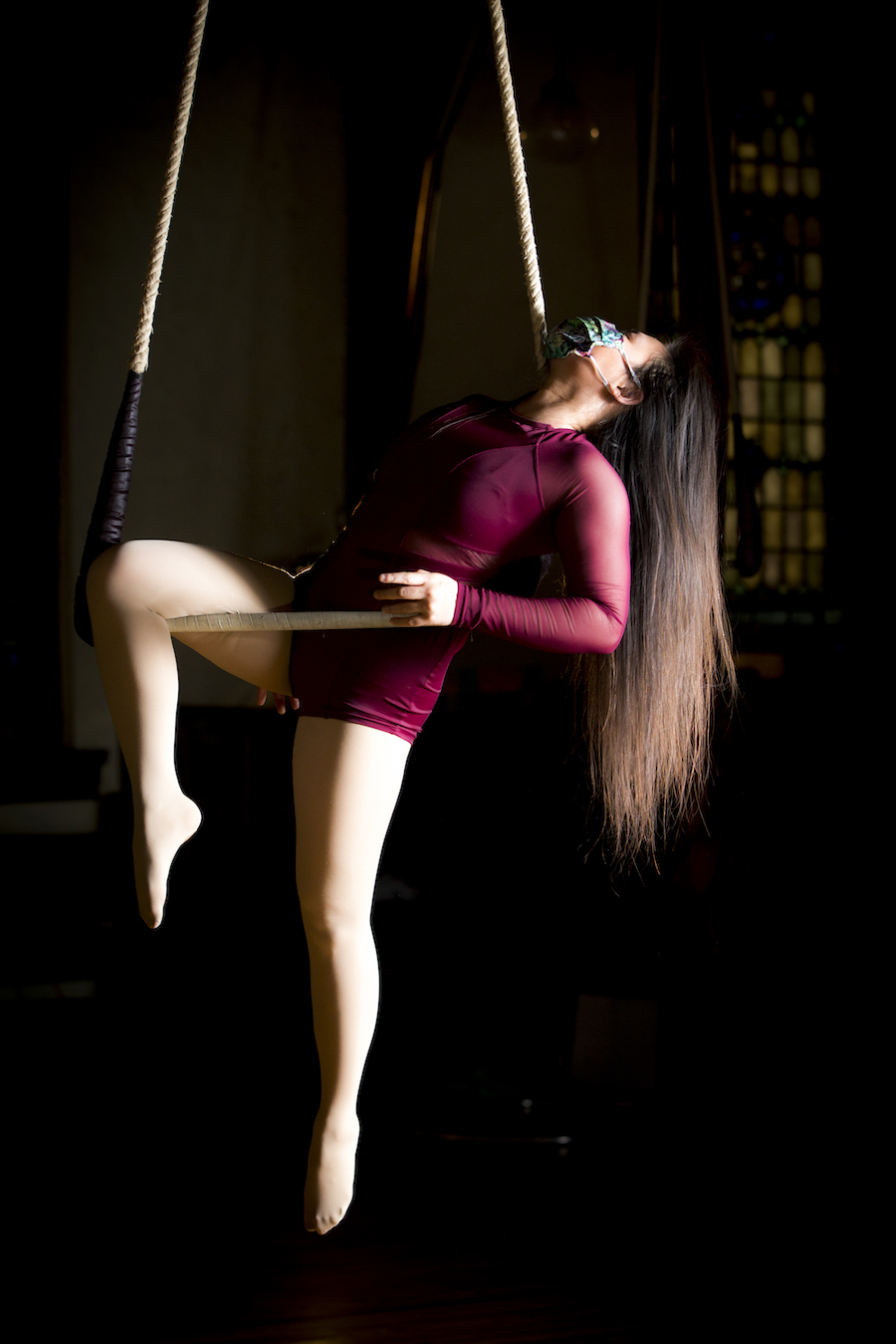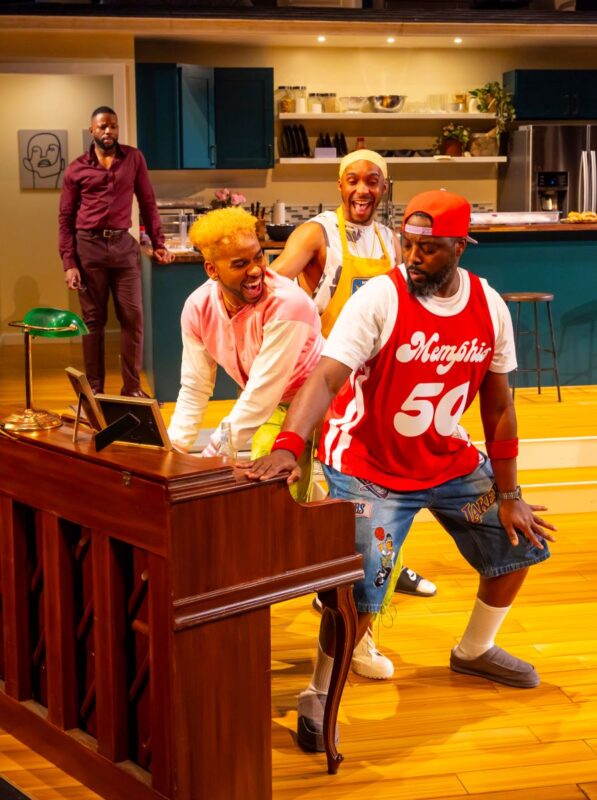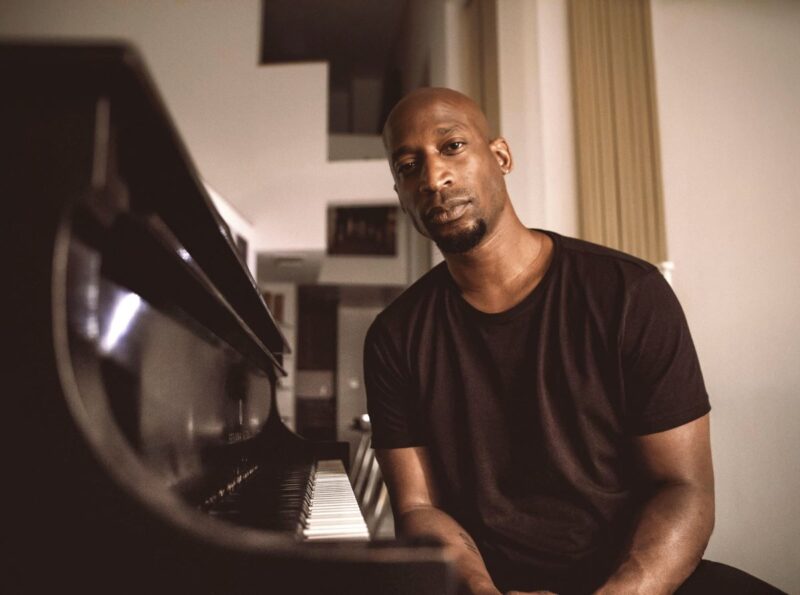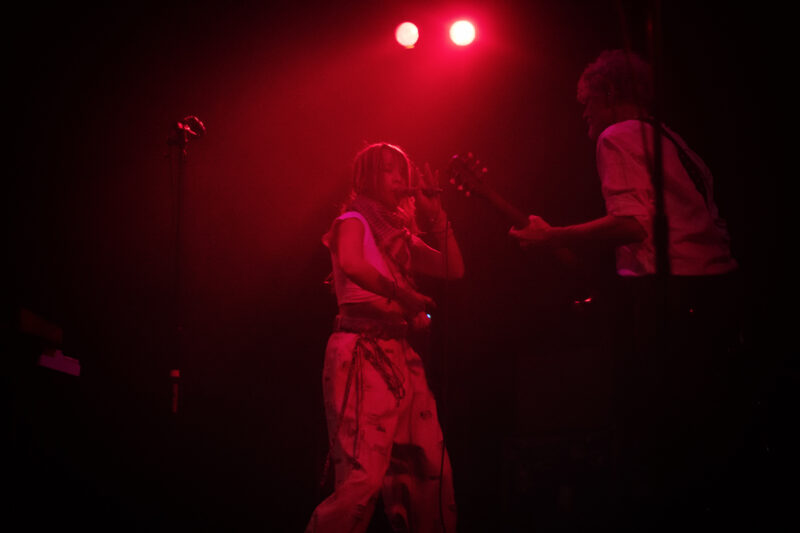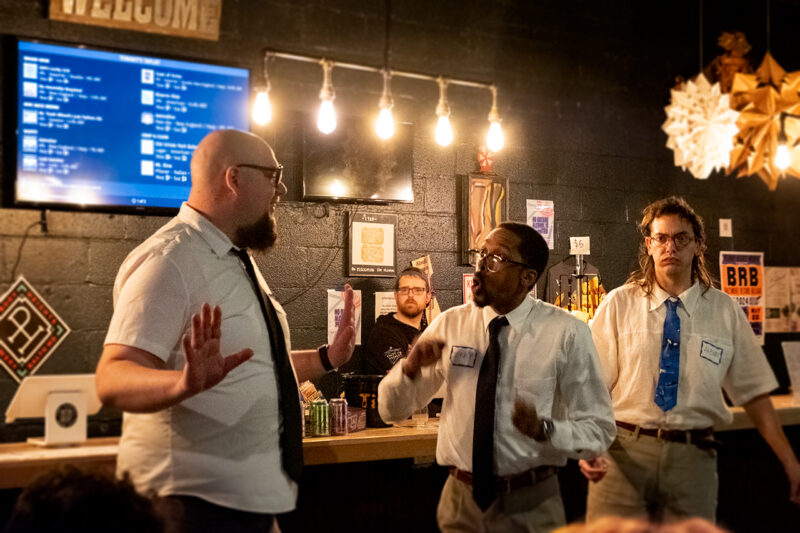A career or hobby in circus is not an escape but rather a way of life. In the case of Kelly Jo Chartier, the founder of Pigtown’s In the Dark Circus Arts (ITDCA) it was her plan C. In 2007, while getting her master’s in marine science at the University of North Carolina in Wilmington, she decided on a whim to drive three hours to a Chapel Hill yoga studio to take a class in aerial silks. For the former ballerina and long-time amateur hula hooper, which Chartier describes as the “gateway drug” to circus performing, perhaps this was destiny. Over the last decade, Chartier has built a circus community in Baltimore.
After graduation, the Westminster, MD, native returned to Baltimore to tend bar and work at the Smithsonian Environmental Research Center in Edgewater, MD. Chartier posted flyers around town letting people know that she was teaching aerial silks, first in Wyman Park and then later at Mobtown Ballroom, a dance studio and event space run by Michael Seguin and Sarah Sullivan in the secularized Saint Paul’s Episcopal Church, where the studio is still located today.
In 2012, facing a lack of job prospects, Chartier decided to audition to attend the New England Center for Circus Arts in Brattleboro, VT, a circus boot camp of sorts that presented a new career path forward. Life in Vermont was “circus all day, all night,” she says. “You eat and you breathe circus.” When she returned to Baltimore in 2013, Chartier expanded the offerings of her school to include other circus disciplines such as the German wheel and trapeze, in addition to the aerial silks she was already teaching. In the beginning, Chartier taught everything herself—24 hour-long classes a week, a schedule she now describes as insane. Over time, she was able to hire coaches who had trained elsewhere and performed on cruise ships.

